Everyone at one point or another has been worried about getting a good idea. No creative person is immune to the work of generating ideas. No one.
We all share a common misconception: that ideas pop into mind fully formed by themselves, fresh, new, and creative. It feels like it should be that way. We constantly hear about how this artist or that writer sat down and let it happen on the page. After all, we’re told that true artists never work at their ideas, they just ‘get them’ and then create from there.
We also easily assume that all the work is in painting the idea, but that the idea itself comes from someplace out of the ether, from our Muse, dropped from the heavens, appearing as magic from a parallel universe only artists can tap into.
I’ve heard a few artists proclaim that they don’t get ideas, they have them. Meaning of course that they have them already. I’ve said this myself while trying to explain where I get my ideas from. But this isn’t quite the real answer. You have ideas when you’ve spent a ton of time building and working with ideas.
So let’s identify: What is an idea? A good definition: an idea is a fresh recombination of older elements.
Ideas are not new, as thoughts are not new. They come from the thoughts that came before them. We don’t really start thinking, we simply join the thinking that’s already going on. In other words, we jump onto the train of thought. Thoughts come from thoughts.
Ideas feel fresh. Ideas feel unique and different. Ideas feel new, but they’re not. The saying seems true: there are no new ideas in the world. That’s because the latest ideas are built from what’s come before.
At this stage of my career, I tend to think the old adage is true: there’s nothing worse than a clever idea. Because clever doesn’t last. Being clever is not the point. Concepts with staying power have a feeling of familiarity, yet shifted slightly to compel the viewer to keep looking.
Below are simple measures to keep in mind when working out a new painting. Most of the real work is in the concept stage. Not just getting the idea, but developing the idea. There are techniques to generating ideas and they’re simpler than you think.
The points below are separated into stages so that the concepts behind them can be easy to comprehend. But all of them can be commingled. They overlap and cross-pollinate to add depth to each point. They will feel familiar because like any artist on our creative path, we stumble over them as part of the overall evolution we experience along the way to developing.
We are all a part of the same creative effort.
Artists think on paper
Get to the page, immediately. Your solutions reveal themselves to you through your drawing, not your pop-up ideas. Draw. Ideas come out of the effort. Then they develop as you refine the sketches. Get to the paper as soon as you can.
Visualize first
One advantage I’ve noticed over the years in the business is that there are people who think in words and people who think in pictures. As artists we have a great advantage in thinking visually. Visuals drive nearly everything, from designing living spaces and products, to scientific discovery and quantum physics. Major breakthroughs have been realized by scientists thinking visually and using it to work out complex equations and inventions.
Your ideas must work visually. The storytelling is in the visual. But when you’re stuck, use words to find images, and vice versa. Visualize to verbalize.
The paradox of back in the box
We hear it all the time now: think outside the box. Fine. That works when you’re speaking to engineers or programmers. But as artists we’re always going way too far outside the box. Particularly when working in illustration because generally the box is everything. Book covers, posters, pages, trading cards, comics. It’s all about The Box.
As artists our ideas are defined by the box. Do not ever be afraid of it. Embrace it, because all of our thinking outside the box is about getting it all back into the box. Like the point below, this kind of restriction enhances ideas, it doesn’t limit them. Ideas gain strength from the limitations by threatening to break out.
Restrict yourself
With all of that free-thinking, free-association, and visualizing the mind can be set adrift. Once started, ideas will come one after the other. Sometimes in a cascade of ideas that’s hard to keep up with, in a scattershot affect that can confuse. Good.
Now restrict yourself to refining the ideas into simpler approaches. This sounds contradictory and in fact it is. It’s part of the process of idea generation. If you’re going to explore, expect to find more than you can deal with. When you do, hone the ideas into a more concise direction.
Ask what if?
We all can get stuck when designing a composition because we feel exhausted looking for changes to improve the concept. What can we add? What else is part of the idea? It’s a natural wall to come up against.
The way around is through. Ask yourself ‘what if’ questions. What if it was night time? What if there were more figures? Less? What if it was a lower angle? Higher? Indoors? Outdoors? What if it was in a swamp setting? What if in a swamp setting at night? What if a swamp setting in fog? What if it was in the city? What if it was 1942? What if the place was on fire? In a flood? What if it was raining? Snowing? Sweltering? On and on and on…
When I mention this in a class, artists immediately start looking at their work with fresh eyes.
Study other disciplines
Broaden your scope to fields you don’t know much about, or …maybe you do. Maybe you play an instrument, or maybe you’re a killer cook. Always take information from other fields and see how it parallels visually with your concepts. Maybe answers appear by studying the martial arts and drawing a parallel between body movement and focus to your images. (this happened for me) Maybe studying the way a problem was solved in science or industry can provide clues to a similar visual problem you are working out.
Generate a lot of ideas
One doesn’t get better ideas by thinking better thoughts. It doesn’t work that way. Ideas improve through work, through effort. Drawing sketch after sketch is the course of action necessary to improve the way your mind thinks about ideas in the first place. It improves with time.
Improving ideas comes from far more than just thinking harder. It comes from developing good drawing skills (training a lot), developing good design (studying composition, shape, value), learning good taste (studying painting, history, manners, fashion) as just a few examples. It takes all of it.
Prime the pump
Save analysis for later. For now, any idea is relevant if you begin with a vague idea of a concept. Getting that vague idea on paper is imperative. Remember ideas lead to ideas. Refined ideas lead to better and better ideas. Prime your pump by thinking loosely, generally and then refine and focus the effort as you go.
Getting to the paper is key. Sound familiar?
Always another answer
There’s always another way to look at it. We live in a three dimensional world, not just the two dimensions of the painting surface. Learn to explore your subject in 3D. There is always another angle, another pov, another way to express the same idea. Do not look for the perfect one. They don’t exist. Because they all exist. (Contradiction! Yikes this stuff is so Zen.) Finding the one you want to express is more about you than the idea.
Even the idea you finally develop can not only be improved, but can be re-visualized, recaptured in multiple ways. Get over the 2D thinking. Not only in practice, but in concept. Ideas are a dime a dozen. Maybe even cheaper.
Tenacity
Give yourself a self-imposed deadline. Then work for it. Stay on it. The artists that succeed are not usually the thinkers but the ones that finish the thought. Be tenacious. Keep after it. Meet your deadline.
Forget it and work on something else
Wait…what? Why? Because the brain works on things in the background. You set it going by pouring yourself into the information that surrounds the subject. You pound away at it, pondering, focusing, researching, drawing, diving in deep. If nothing comes, let it sit for awhile. (Another contradiction?)
Yes. Research shows that breaking from intense study can allow the brain to explore the subject and all you’ve taken in while it works in the background. When you move to something else (that something else isn’t giving up and watching TV either) it’s still working, as long as you move on to another creative endeavor like playing an instrument, cooking, writing a book, working on something that requires your brain to continue creation while it continues to make intuitive connections in the background.
Don’t sit there, move
Take action. Now. Keep drawing, stay in motion. No matter how awkward, no matter how stilted or bad. No matter if it’s not what you want. No matter if it’s just. not. working.
Ideas do not flow to the brain that waits. Initiate. Even when it’s not comfortable. Professionals learn how to turn this on and off, but not because they just can. It happens over time, but mostly it happens over process. Doing. A lot.
It has taken me eons to get comfortable with failure (I’m still working on that because, as expected, failure doesn’t work until it stings a bit) and sloppy thinking, false starts, uncomfortable approaches, dumb ideas, cliches, tropes, frustration.
Success before finishing
Perhaps the worst thing you can hear when you tell someone about your idea is: “wow, I love it!” This is dangerous territory because when your brain hears that elation, it records ‘success’ before you’ve even attempted to get it down.
I always have to remind myself: if I share an idea, it’s a commitment.
There are billions of us walking around with brilliant ideas. But how many take the risk to finish one? We all have ideas for solutions to human problems. Good ideas, too. But they demand construction to complete the idea, for an idea without production is just so much air.
And an idea for a painting doesn’t exist until it’s a thing.


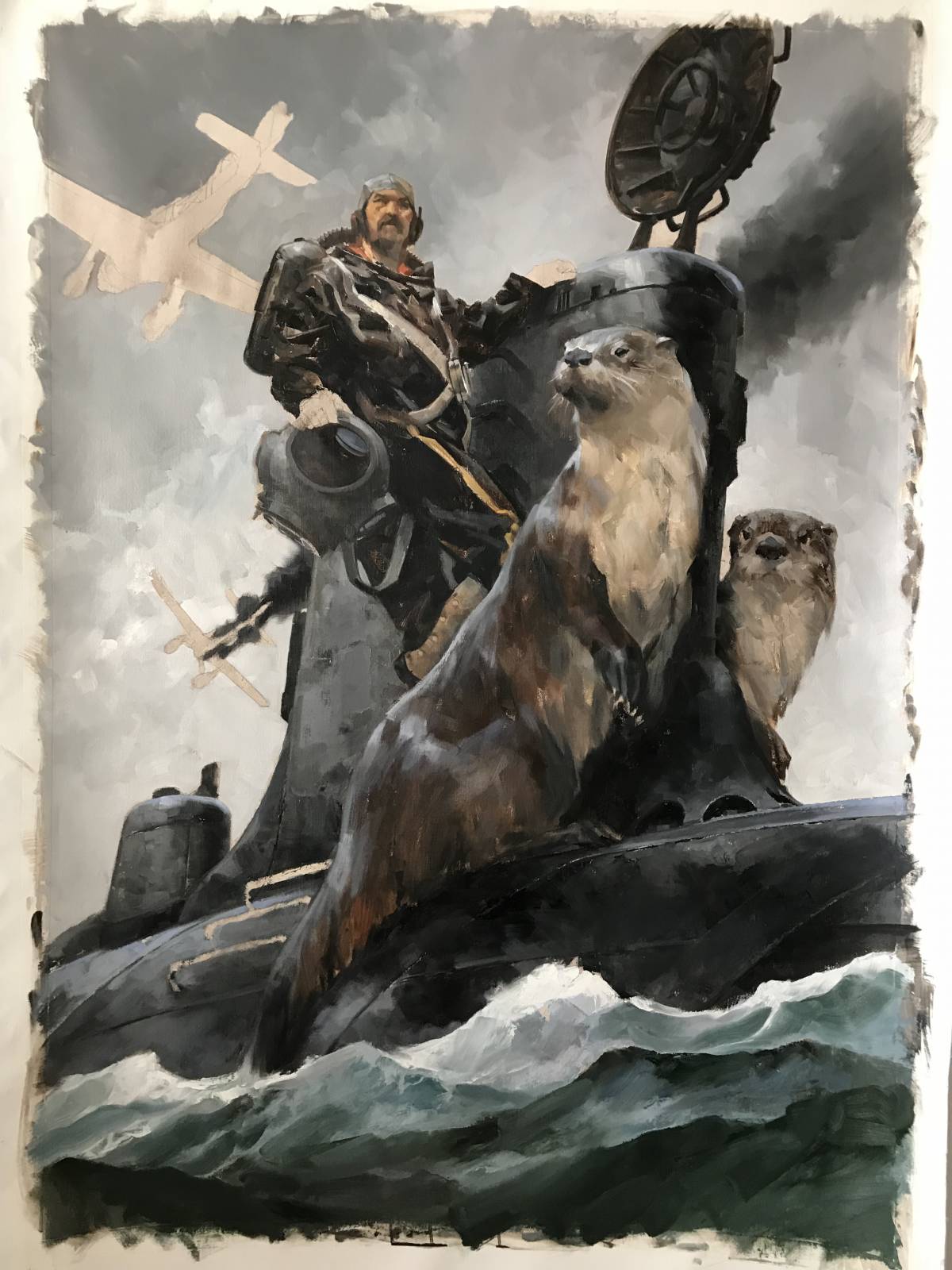


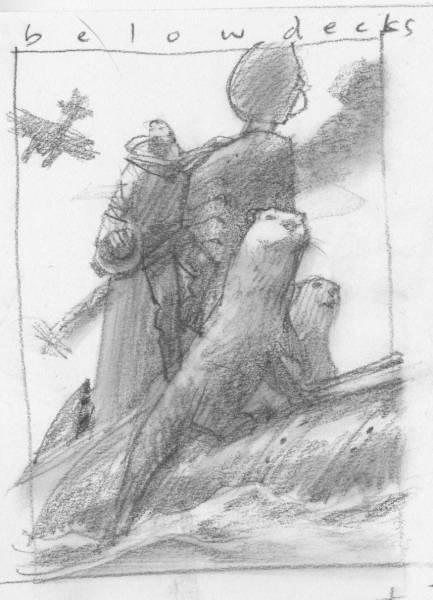
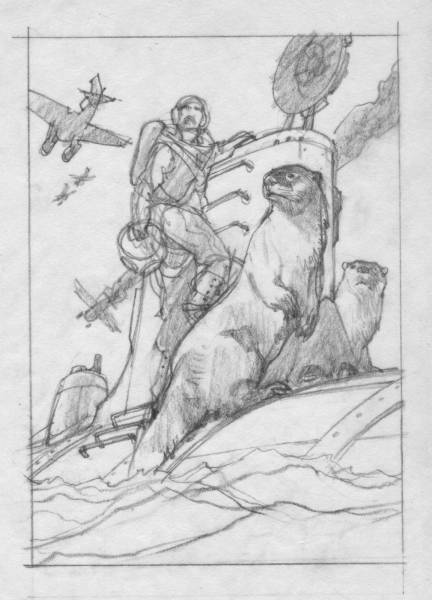

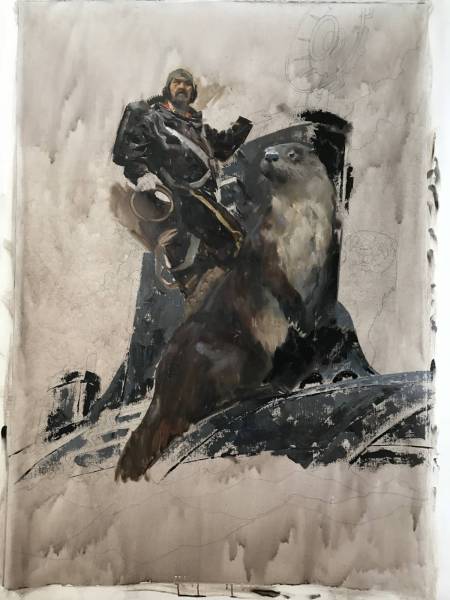
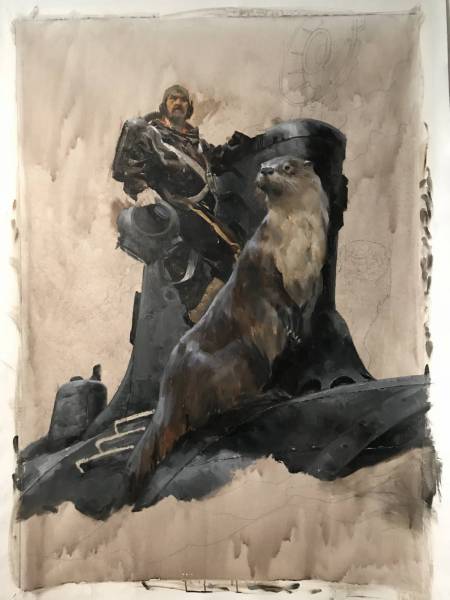
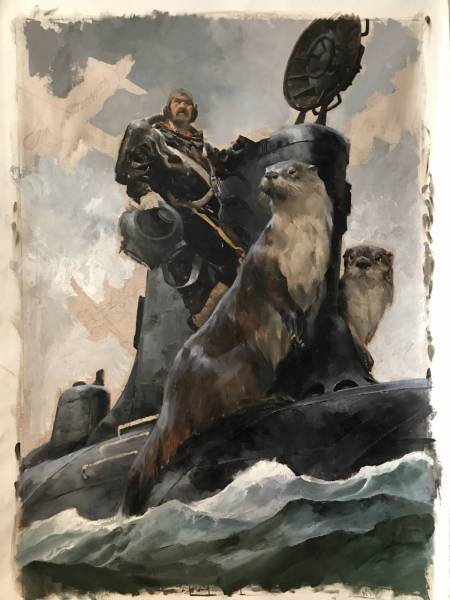
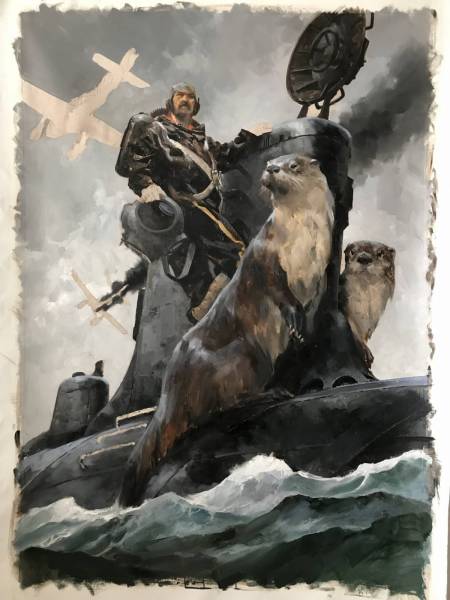



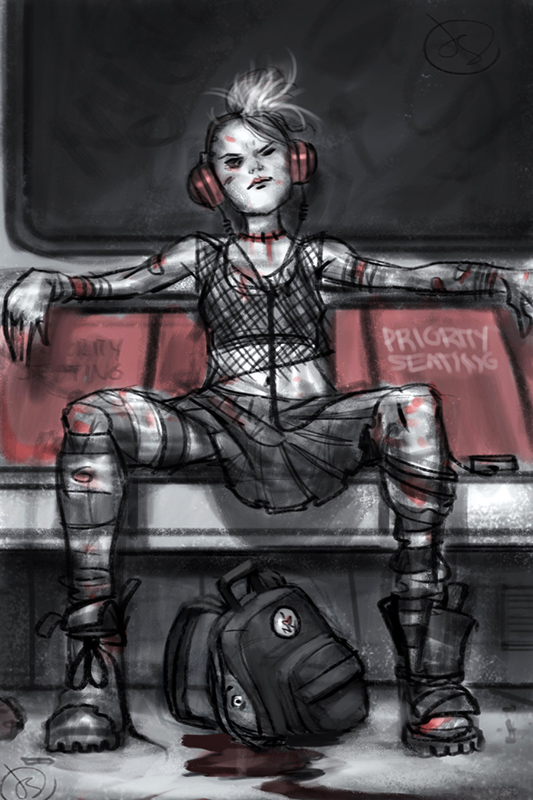
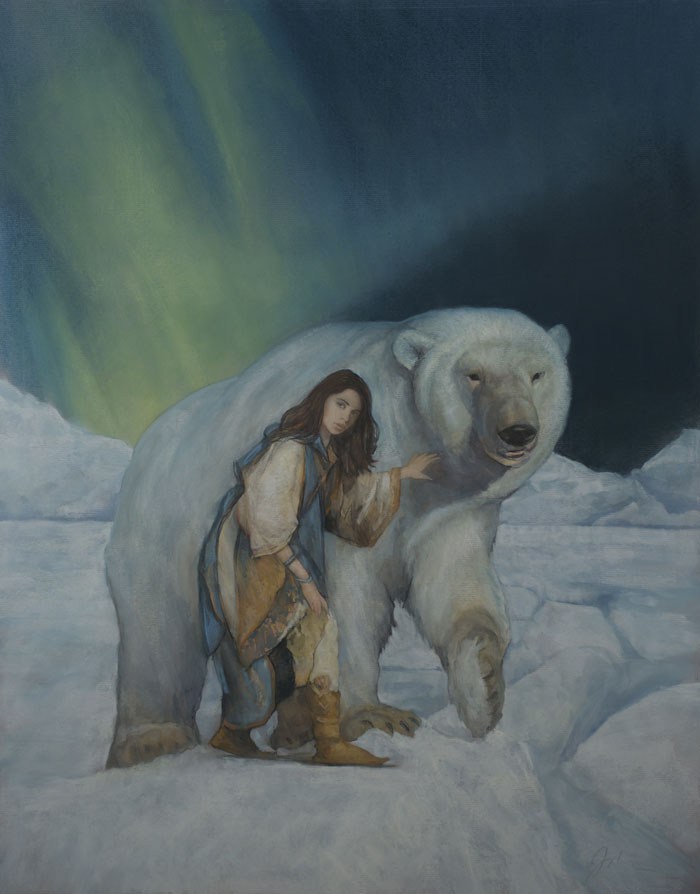
Your posts always seem to come exactly when I need them. Great share!
Like Sam said, this post came at the perfect time. I’m working on a set of three conceptual illustrations, and this is exactly the advice and encouragement I needed. Thanks
Thanks, guys…just remember that ideas are generated by working at them, instead of letting them occur. It’s about the work. Oddly, we aren’t taught to think about it in this way, but research into well-known creatives who work with ideas shows that they don’t really wait around for that magical inspiration.
Great advice, Greg, particularly regarding restrictions – as Orson Welles said, “The enemy of art is the absence of limitations”. B^)
That was encouraging, Greg; the same advice applies to fine art painting as well (where deadlines also exist!) thanks for sharing~
Great Post, Greg! Can you tell us a bit more about this piece with the otters?
I have a daughter who’s crazy about polar bears and another who really loves otters, so I’ll have to share this with her.
Dad is crazy about great art—no matter what the subject is! Thanks for providing so much of it!
If only ideas did “pop into mind fully formed by themselves, fresh, new, and creative”. It can appear that way because other people see only the end result, but it’s always tied to previous work. Though at times the connections are tangential or circular not linear.
“The artists that succeed are not usually the thinkers but the ones that finish the thought. ”
I needed to hear this today.
Great post, as always!
To quote a truth from another form of artistic endeavor, “Writing is generative.” I tried to get this across to my kids in the context of writing papers for college. You don’t have to have the complete composition in mind when you start out. A wonderful illustration of that can be found in Sean Connery’s film Finding Forrester. There’s the great scene where he sits down opposite the young high school student who has come to him for advice on writing. The both have type writers and Connery wants them to write together like some kind of clattering duet. The kid just sits there thinking while Connery bangs away. Finally Connery says, “Type dawg! Type!” A great film. Thanks for all of your insights, and I LOVE the piece above. Blessings and best wishes at Christmas and in 2022, Aaron
“Being clever is not the point. Concepts with staying power have a feeling of familiarity, yet shifted slightly to compel the viewer to keep looking.”
Excellent point! Wish I’d read this years ago. Thanks for sharing!
“There is always another angle, another pov, another way to express the same idea. Do not look for the perfect one. They don’t exist. Because they all exist.” Gulp! This reminds me that decisiveness is a tool too — make your choice, see it through, then circle back around afterward to analyze.
This was so helpful, Greg! Thank you for sharing your well-sharpened thoughts.